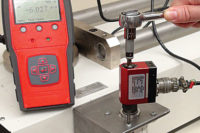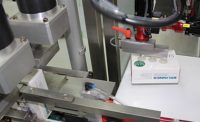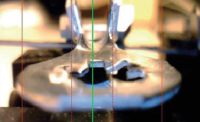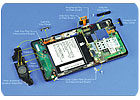
One of many images used to diagram the assembly sequence and connectivity within the Motorola Droid. Photo courtesy Portelligent.
Consumers see how products change over time from the outside in. Changes in appearance, size, weight, color and price are easily noticed. Manufacturers, however, focus on how they can improve their products over time from the inside out-by enhancing quality, lowering costs and increasing productivity and profits.
Product teardowns help manufacturers achieve all of these goals. “It’s been a long-standing practice for many years now,” says David Carey, president of Portelligent, a company that provides teardown services.
Product teardown is an outgrowth of value analysis with a focus on competitive, highly engineered products. “Initially it was done just to solve a functional or technical problem in your product,” says Christian Heiss of Oliver Wyman, a company that helps companies do product teardown. “But in the last 10 years, a strong focus on assembly processes has been added because of their high cost factor.”
Manufacturers have long used product teardowns to create libraries of product components and competitors’ designs for future reference. Indeed, Xerox, IBM and Kodak would always buy their competitors’ copy machines to take them apart to see how they worked.
“Most people have an inherent curiosity as to what’s going on inside the devices they handle on a daily basis,” says Andrew Rassweiler, director and principal analyst for teardown services for iSuppli Corp., another company that provides teardown services. “But not a lot of people, except those designing it and producing it, ever get to see what’s inside.”
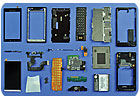
A top-down view of the Motorola Droid's primary components after teardown. Photo courtesy Portelligent.
What it is...and Isn't
A product teardown is product disassembly in a structured and orderly manner, says David Meeker, a lecturer at Massachusetts Institute of Technology and founder of Neoteric Product Development, a product teardown consulting firm. Data is collected at each stage of the process. However, the level of component documentation can vary depending on the product and amount of information desired by the manufacturer.For example, a teardown can dive down to the silicon level. Rassweiler says iSuppli aims to create the most thorough and accurate bill of materials for its clients down to a product’s “constituent, discrete components…like surface-mount resistors and capacitors.”
Heiss describes product teardown as “the ‘CSI’ of competitive product benchmarking.”
Traditionally, benchmarking has been about finding the best products and emulating them. However, the process should not be confused with reverse engineering.
“When people think of teardown, they often jump to the conclusion that we’re doing reverse engineering. And that’s not what we’re doing,” says Rasweiler. “People look down on that because it’s intellectual property theft.”
M3 Design, a product development and design firm, says “reverse engineering a product is nothing more than figuring out the design and manufacturing methods, typically for copying.”
Nonetheless, stealing product designs by replication has probably been going on since the dawn of time. “The story that comes most to mind is the one about Francis Cabot Lowell, who came to New England and replicated knitting looms of Great Britain by memorizing the parts used there,” says Meeker.

iSuppli provides its teardown clients an interactive data presentation via the web. Here is a sample main navigation page. Photo courtesy iSuppli Corp.
Should You or Shouldn't You?
When should a manufacturer conduct a product teardown? This question can only be answered after two others have been addressed: What do you want to learn from a product teardown? How many resources can you allocate to it?Concerning the first question, Rassweiler says manufacturers can learn many things from a product teardown, including how their component selection and cost compares with that of their competitors. Manufacturers can also determine if the competition is producing the same functionality with fewer components.
However, component price isn’t always the most important factor focused on in a product teardown. “Your product might have a technical advantage that is worth paying even more for because it offsets or eliminates the need for other components,” says Rassweiler. “The total costs typically go down because using the right component can simplify your design.”
Through teardown, electronics assemblers can learn much about integrated circuits and trends in the types of assemblies that are being made, such as rigid vs. flexible circuit boards. They can also learn simple metrics by which to measure the complexity of one device vs. another and its manufacturability.
iSuppli measures the pin count and pitch of every integrated circuit it obtains through teardown-this is data a manufacturer can use to help it estimate manufacturing costs.
Product teardown provides manufacturers with important information like component weight, material and dimensions. It also helps them learn how they or a competitor are assembling several different parts, how they’re modularizing the design, and whether or not component features make it amenable to assembly.
“It can help address questions like, what do we think their molds are like for doing these injected-molded parts?” says David Wallace, a professor of mechanical engineering at MIT. “Or, how do they maintain a nice gap on a parting feature between things? Manufacturers are still doing a fair bit of product designing as well, so by doing this they’re just building a knowledge base they can draw on about different ways that something might be accomplished.”
Oliver Wyman helps its clients get the most from product teardowns by having them do a “teardown and reassembly in parallel” with both their own and competitors’ products. This illustrates how many non-value-adding steps a competitor has in the assembly process and how many the client has. This exercise helps the client learn more about its assembly process and how the product is engineered for manufacturability and assembly.
“You create a flow chart of the assembly steps and then mark in red all those steps that are not value-adding,” explains Heiss. “For high-volume products, this is a very powerful tool because it finds areas where some seconds are wasted. Better technical solutions can be learned, and better engineering for manufacturability or assembly processes can be found out.”
When done to a group of products over time, teardown also can provide a story of a product’s progress in the marketplace, says Carey.
As for the resources question, manufacturers can often benefit from an independent third-party perspective on their products. “As is the case in most companies, after awhile you start having group think,” says Rassweiler. “Everyone starts patting themselves on the back and says, ‘we’re doing great’… only to find out that nobody else would agree with that.”
The same benefit analysis that applies to outsourcing, manufacturing applies to product teardown, as well. “The advantage of doing it in-house, theoretically, is the company only spends time and money finding out those things that are of most interest to them,” says Rassweiler. “But most people find it’s hard to have dedicated internal resources to do that. It’s often much simpler to pick up the phone and order the report from us.”
According to Rassweiler, manufacturers that do a lot of teardowns must dedicate employees and salaries to that task alone. These resources add up quickly because the talent required to do this properly is not inexpensive. Carey agrees. Hiring an outside service allows a manufacturer to keep its engineers focused on innovation and developing new products.
Meeker, who has more than 20 years of teardown experience, offers a different viewpoint. “Companies that do teardown in-house gain both the experience of the journey in actually doing it, as well as a skill set that eventually trickles down into their manufacturing and design and results in better products,” he says. “It’s not that the third-party report you buy doesn’t give you a lot of amazing valuable data. It’s that you don’t have that firsthand experience of having done the work yourself. ”
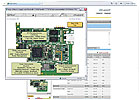
The interactive report includes annotated pictures, such as this one of an integrated circuit board. Photo courtesy iSuppli Corp.
Step by Step
Almost any type of engineered product is a candidate for teardown. The best candidates for teardown are high-volume products with a three- to seven-year lifecycle. “These include automobiles, agricultural and other machinery, mechanical parts, white goods, computers and transportation products like trains and airplanes,” says Heiss.During his 17-year career, Heiss has done product teardowns on automobiles, electronics, trains, automotive parts, helicopters and military weapons. Meeker’s teardown resume includes work on many electronic products, including coffee grinders, vacuum sensors and driver propulsion vehicles. Both say that teardown is very prevalent in the automotive industry.
“When I worked at Digital Equipment we used to routinely take apart electronic toys because they were cutting edge, cool and fairly inexpensive,” says Meeker. “We were looking for ideas and what they were doing. It’s good to keep an eye on your competitors. It’s also good to stray afield occasionally for ideas and see what other people are doing in stuff.”
Rassweiler says his company has done teardowns on electronic products of all sizes-from a tiny iPod Shuffle to a cellular bay station. The company also frequently tears down consumer and industrial electronic products, including computers. “Some things we tear down because we think it will be interesting,” he adds.
Monolithic products, like wood or glass, are not teardown candidates. “However, I would do a teardown on the complete window system because of the engineered content in there,” says Heiss.
The physical teardown of a product can be done either by a team or individual, although the team approach appears to be more common. Rassweiler says it is rare for one person at iSuppli to do a complete teardown alone. “The company usually has someone at the junior engineering level start the project and create a bill of materials but leave a lot of blanks and question marks to be resolved by someone who’s more senior or experienced,” he explains. “There are usually several levels of double-checking.”
Meeker likes to work in a team only because it lets each person focus on one responsibility, such as collecting data, shooting photos or organizing parts, so the process goes much smoother and quicker.
“At most car manufacturers you have teardown departments that only buy new vehicles that come on the market, tear them down and send data to the interested departments there [engineering, purchasing, etc.],” he says.
Most product teardowns follow a basic procedure, beginning with setup. Step one is to define the investigation scope. Do you need to tear down a complete car, or just its powertrain or interior? Next you must select the products you want to compare. Teardowns of just one product do occur but are rare.
Step three is to determine what you want to find out, such as technical solutions, costs or materials used, and the appropriate methodologies for obtaining this information. “It’s a very structured approach, like with a forensic crime scene investigation,” says Heiss. “You must be sure to analyze things in the correct order, because one wrong analysis can impact the results of the following analyses.”
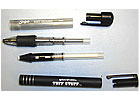
By tearing down similar types of products, one often learns that different manufacturers have the same design. Photo courtesy 2.009 Massachusetts Institute of Technology.
At this point the physical teardown is done. Each product component is disassembled, weighed, photographed and categorized, and its properties documented. The duration of the teardown will vary depending on the product’s technical complexity, although it usually takes no more than one month to go from a “boxed functional product to a pile of parts and finished report,” says Carey, adding that the deeper the product teardown, the more expertise and lab capability are needed.
“Very systematically, we document everything, including the packaging and literature,” says Meeker. “Many times when you’re taking something apart, you’ll pull out a couple screws and a giant subassembly will drop in your hand. We set that aside and keep going all the way until nothing’s left to take apart and you’re left with a bare chassis.”
When photos do not provide sufficient detail, block diagrams, force flow diagrams and functional models can be created as part of the teardown learning exercise. A block diagram lets a manufacturer look at a collection of components and determine the logical way in which those are likely hooked up and talking to one another. Force flow diagrams track the movement of forces through a product and can be used to expose opportunities for component combinations. Functional models demonstrate the product’s transformation and transference of materials, information, and energy from an input state into the desired functions.
Once all product teardown data has been documented, it is analyzed and presented in a report, including a summary of all the important information learned. Different teardown companies provide their reports in different formats. Oliver Wyman and Portelligent provide a PDF, while iSuppli delivers an interactive presentation via web.
“It lets you walk through all the different levels of disassembly in the form of annotated pictures, supporting text and pie charts,” says Rassweiler. “There’s online text and an Excel file you can download with a complete bill of materials, costs and data that can be summarized in different ways.”
With the report in hand, manufacturers can use this information as the basis for “structured brainstorm workshops” to identify ways to improve their product, says Heiss. These ideas should be documented clearly in a way that all company departments can easily understand.
Finally, the best ideas-especially those that improve quality and lower costs-need to be evaluated and brought into the product. “Teardown is an expensive and time-consuming process,” says Heiss. “When done wrong, it’s just a waste of time. But when done right, it’s a very, very powerful tool to learn about your own and competitive products.”
Learn more about product teardown by checking out the following article:

